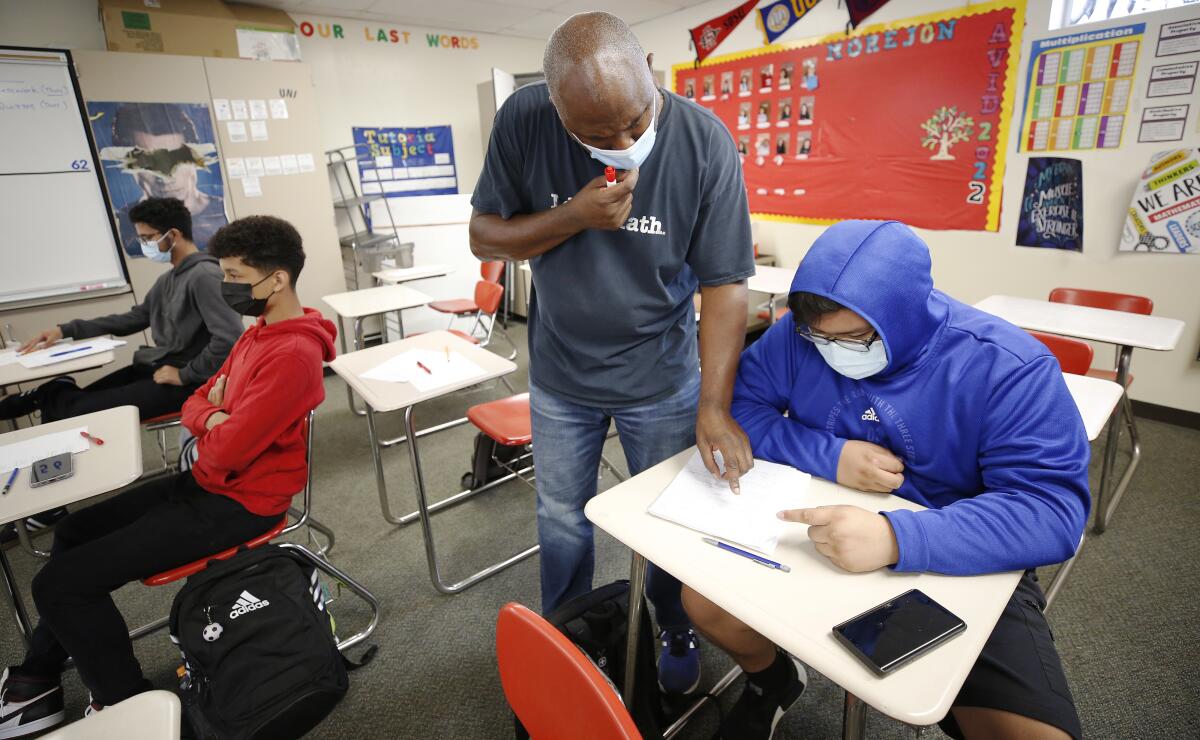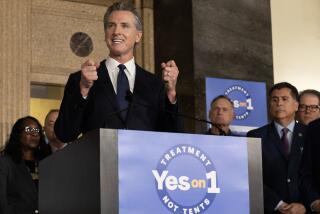Editorial: From recall candidates, no fresh ideas on California schools

Considering that schools are among the biggest swords on which Gov. Gavin Newsom could fall come Sept. 14, you would expect the top candidates vying for the job to have robust plans for how they would improve education.
Instead â with the intriguing exception of one candidate â they fall back on simplistic notions that school choice, mainly charter schools, will fix everything, or vow to do what Newsom already has done, namely reopen schools and aim more money at teachers, counselors and extra tutoring.
Some engage in specious claims that the dropout rate is at its highest in decades (itâs not) and that Newsom is angling to require that students be indoctrinated in critical race theory in schools (heâs not, and besides, when taught well, critical race theory has important lessons to impart).
Itâs a shame because Newsom, in fact, has not been a strong education leader, too often hewing to the priorities of the California Teachers Assn., a major contributor to Democratic candidates. As of Aug. 2, according to an analysis by CalMatters, the powerful teachers union had kicked in $1.8 million to defeat the recall. The most damaging example: When teachers unions fought against reopening school campuses during most of the previous academic year, Newsom was among the most reluctant governors in the nation to reopen schools even when it had been generally shown to be safe. It didnât help his image when his own kids returned to their private school while public schools remained shuttered.
But the campuses are opening now and Newsom is trying to keep it that way by requiring masks indoors as well as vaccination or regular testing of school staff. (And shame on candidate and Assemblyman Kevin Kiley for the statement on his website about âthe suffocating uniformity of maskingâ at schools. Kiley needs to update his science knowledge â these are the days of the highly contagious Delta variant and masks are the least we can do to try to keep the virus from spreading and schools from closing.)
Kiley, like radio host Larry Elder and businessman John Cox, sees school choice as the singular fix to what ails public education. Cox takes it a step further by suggesting that families be given $14,000 per student â the average that the state is currently spending â to take to whatever school they want, public or private.
But the most recent and highest-quality studies make it clear that charter schools arenât a panacea. One such study found that the best-run charter organizations produce significantly better results for low-income students, while for others the differences are slight and in some cases abysmally worse.
Charters are a helpful part of the public school picture, but they will not magically overcome the obstacles that plague California schools.
Coxâs voucher idea is downright regressive. Rich families can add their own money to the $14,000 to afford schools with all the bells and whistles. They also are better able to ferry their kids to and from their top choices. Low-income kids lack such options. In addition, the stateâs funding formula now gives significantly more money per student to low-income schools such as those in the Los Angeles Unified School District, so those families would be materially harmed by Coxâs proposal.
Former San Diego Mayor Kevin Faulconer calls for more funding for extra instructional time and mental health counselors. Fine, but that funding already is in place and schools canât find enough counselors for hire. He also calls for letting parents hold their kids back a year in their current grade, but grade retention has not been found to be a useful way to improve learning. Doing the same thing for an extra year and expecting different results is â well, we all know how that maxim goes.
Real estate agent Kevin Paffrath proposes what he calls Future Schools, which appear to be modeled on the Swiss apprenticeship model. High school students could choose to be in career-oriented schools starting at age 14 that combine high school and community college along with job training to prepare them for jobs that now require a college degree, such as nursing.
Of course we like this idea. We proposed it in early June. Not only would this prepare students for jobs, but the practical, hands-on training would almost certainly be far more engaging for the many students who find the current curriculum boring and irrelevant and who donât want to attend college. Paffrath goes overboard by suggesting that these schools become 70% of the school scene for teenagers â we still need to prepare a lot more students for college â but this is one idea that is student-centered and would actually change the shape of the landscape for the better.
But Future Schools would not address the hurdles that students face beginning in the primary grades that set them up for failure. Itâs an idea, not an education plan. One that the public school system should incorporate, but not one that calls for throwing out the current governor.
More to Read
A cure for the common opinion
Get thought-provoking perspectives with our weekly newsletter.
You may occasionally receive promotional content from the Los Angeles Times.










